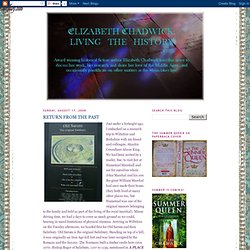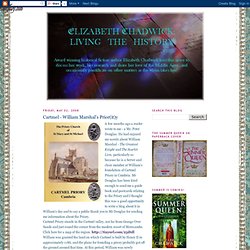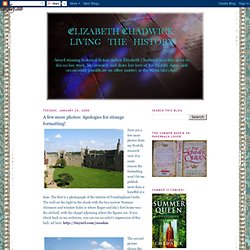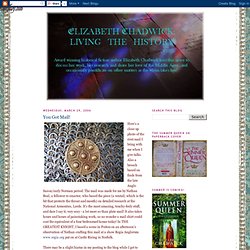

Adrian Fletcher travels Renaissance & Medieval Italy, France, Spain and Britain 1,000 pages packed with Outstanding Photos, Stories, Books, Insights, Food, Restaurants and Travel Tips. Hamelin de Warenne : "Par lege Per Lege" Hamelin FitzCount, Earl of Surrey and Warenne Circa 1130 - 1202 "Par Lege Per Lege" Hamelin FitzCount is one of those supporting role players in English history who is vaguely known to people well versed in the life of the Angevin kings, but otherwise off most people’s radar.

However, he has a big part to play in my Eleanor of Aquitaine trilogy, especially in books 2 and 3, and so does his wife Isabel, Countess of Surrey and Warenne, from whom he took his title. So who was he? The first is a don’t know – his birth date isn’t recorded. Not a great deal is heard about Hamelin before his marriage in 1164. Younger sons, minor branches on the family tree and bastards are always dependent on their greater kin for handouts. Isabel de Warenne was an heiress worth having. Hamelin and Isabel married in April 1164. Bruges. Bruges (/ˈbruːʒ/ in English; Dutch: Brugge, [ˈbrʏɣ̟ə], French: Bruges, [ˈbʁyːʒ], German: Brügge, [ˈbrʏɡə]) is the capital and largest city of the province of West Flanders in the Flemish Region of Belgium.

It is located in the northwest of the country. The area of the whole city amounts to more than 13,840 hectares, including 1,075 hectares off the coast, at Zeebrugge (from Brugge aan zee[2] meaning "Bruges on Sea"[3]). The historic city centre is a prominent World Heritage Site of UNESCO. It is oval-shaped and about 430 hectares in size. The city's total population is 117,073 (1 January 2008),[4] of which around 20,000 live in the city centre. Along with a few other canal-based northern cities, such as Amsterdam, it is sometimes referred to as "The Venice of the North".
CARTMEL AND CUMBRIA. More than two years ago, a man called Peter Douglas wrote to me, saying that he had enjoyed my novels about the Marshal family.

He was a choristor at Cartmel Priory, which had been founded by William Marshal in the late 1180's on his return from the Holy Land and his marriage to Isabelle de Clare. Peter told me that each year around the anniversary of William's death, the priory invites a speaker to come to Cartmel and give a 'Founder's Day Lecture' about something connected with the Priory, and he wondered if I would be willing to give the lecture in 2011.
Previous speakers had included academics among them professor David Crouch, medieval expert and William Marshal's biographer. After a bit of a gulp (being a humble novelist without a university education) I said yes - it was two years away after all. But tempus fugit and all that, and suddenly the event was right on my doorstep. Giving a talk at Cartmel Priory was something rather special. Good afternoon everyone. And he adds. Garth Celyn. Bradenstoke Priory. Hometown castle and church. The Biographical notes on my novels say that I live in Nottingham.

Actually I live near Nottingham, but I do have another town on my doorstep and it's the one I visit most often because I do my grocery shop there. It's Newark On Trent, and it's still a fairly unspoiled, bustling market town with much of its history intact. In the Medieval period, it's famous as being the place where King John died. MARLBOROUGH CASTLE. RETURN FROM THE PAST. Just under a fortnight ago, I embarked on a research trip to Wiltshire and Berkshire with my friend and colleague, Akashic Consultant Alison King.

We had been invited by a reader, Sue, to visit her at Hamstead Marshall and see for ourselves where John Marshal and his son the great William Marshal had once made their home. Cartmel - William Marshal's Prior(it)y. A few months ago a reader wrote to me - a Mr.

Peter Douglas. A few more photos: Apologies for strange formatting! Here are a few more photos from my Norfolk research visit.

For some reason the formatting won't let me publish more than a handful at a time. Ruined Reputations! I've been away on a research break/family holiday in Norfolk, hence the delay in posting.This is me at Wymondham (pronounced Windham) Abbey near where we were staying.Wymondham itself was once owned by the Bigod family, although the Abbey was originally built by an Albini in 1107 to house a community of Benedictine monks and the Abbey was at first a dependant Priory of St Albans Abbey.The ruins of the earlier Abbey are attached to the 15thC church which is still in use and well worth a visit for anyone interested in exploring churches.

There are some particularly fine carvings in the roof and a wonderful gilded reredos behind the high altar. Roof of Wymondham Abbey ChurchSo, you may be asking. Why the title of this post? Well, It's all down to English Heritage's audio guide for Framlingham Castle. The staff were lovely and could not have been more helpful. Entrance to Framlingham Castle, completed around 1213. Templechurch. You Got Mail! Here's a close up photo of the rivet mail I bring with me when I give talks.

Also a brooch based on finds from the late Anglo Saxon/early Norman period. Temple Church. History[edit] Construction[edit]

Marlborough Castle. Marlborough Castle, locally known and recorded in historical documents as The Mount,[1] was an 11th-century royal castle located in the civil parish of Marlborough, a market town in the English county of Wiltshire, on the Old Bath Road, the old main road from London to Bath (grid reference SU18376866). The barrow on which the fortification was built, perhaps the "barrow of Maerla" seems to be a prehistoric earthwork which formed the motte of the Norman Marlborough Castle.[2] It survives as a tree-covered mound at the centre of Marlborough College.
History[edit] Marlborough Castle ceased to be used in 1370 and fell into disrepair, but remained Crown property. Edward VI then passed it to the Seymour family, his mother's relatives.[7] Present[edit] Notable events[edit] Henry I observed Easter here, in 1110.Richard I (Coeur de Lion) gave the castle to his brother John, in 1186.King John was married here on 29 August 1189 to Isabel of Gloucester, and spent time in Marlborough. Coordinates: Chepstow Castle. Norfolk Myths - Legends - Ghosts - The Ghosts of Blickling Hall - Blickling - Norfolk and Holiday Accommodation in Blickling.
Visitor information. The Blickling Estate is one of Norfolk's top visitor attractions and is just short drive from the county's famous sandy beaches. The estate was once the home of the Boleyn family, and now encompasses nearly 5000 acres, with an impressive Jacobean house, a garden you'll want to try to recreate at home, and parkland perfect for walking.